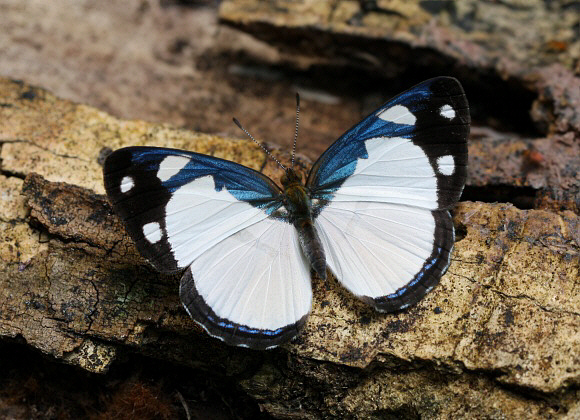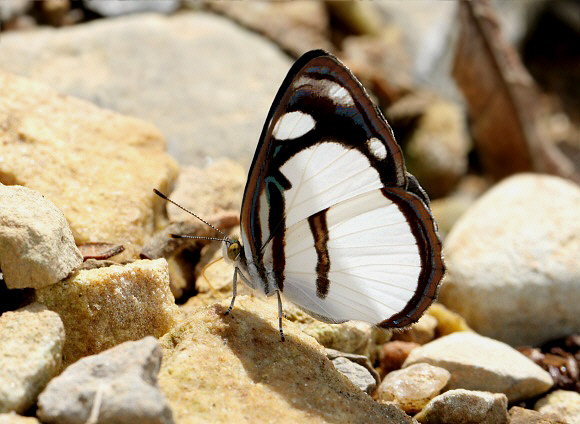 Dynamine athemon, Satipo, Peru – Peter Bruce-Jones
Dynamine athemon, Satipo, Peru – Peter Bruce-Jones
Introduction
The Biblidinae are known for their diverse but simple and colourful patterns. In the neotropics their representatives include the subtribe Eubagina, within which are placed the 40 Dynamine species.Most Dynamine species have metallic bluish or greenish uppersides, with a dark apex and a series of white spots. The upperside of agacles, myrrhina, coenus, theseus, anubis, ate, athemon and one or two others however are white with dark borders and only a trace of blue around the basal area.
The greatest diversity of Dynamine species is found in the Amazon basin, but the distribution of the genus ranges from Mexico to Bolivia.Dynamine athemon is distributed from Panama to Peru and Brazil. There are 7 named subspecies.
Habitats
This species is found in primary rainforest at altitudes between about 200-1000m.
Lifecycle
The eggs of most Dynamine species are white. They are laid singly on the leaf axils or flower buds of Euphorbiaceae genera such as Tragia and Dalechampia. The larvae are described by DeVries as being slug-like, with tiny rosettes of spines on the back. The pupae are greenish, elongate, with a slightly bifid head and a pronounced dorsal keel, and suspended by the cremaster from stems or leaves.
 Dynamine athemon, Satipo, Peru – Adrian Hoskins
Dynamine athemon, Satipo, Peru – Adrian Hoskins
Adult behaviour
The butterflies are very active in hot sunny conditions, when they can be seen flying rapidly in zig-zag fashion, investigating along forest tracks. Males visit dry river beds, and damp ground along sunlit forest tracks and roads. They habitually flick their wings open while moving about in a fairly erratic fashion as they probe for minerals on the ground.
